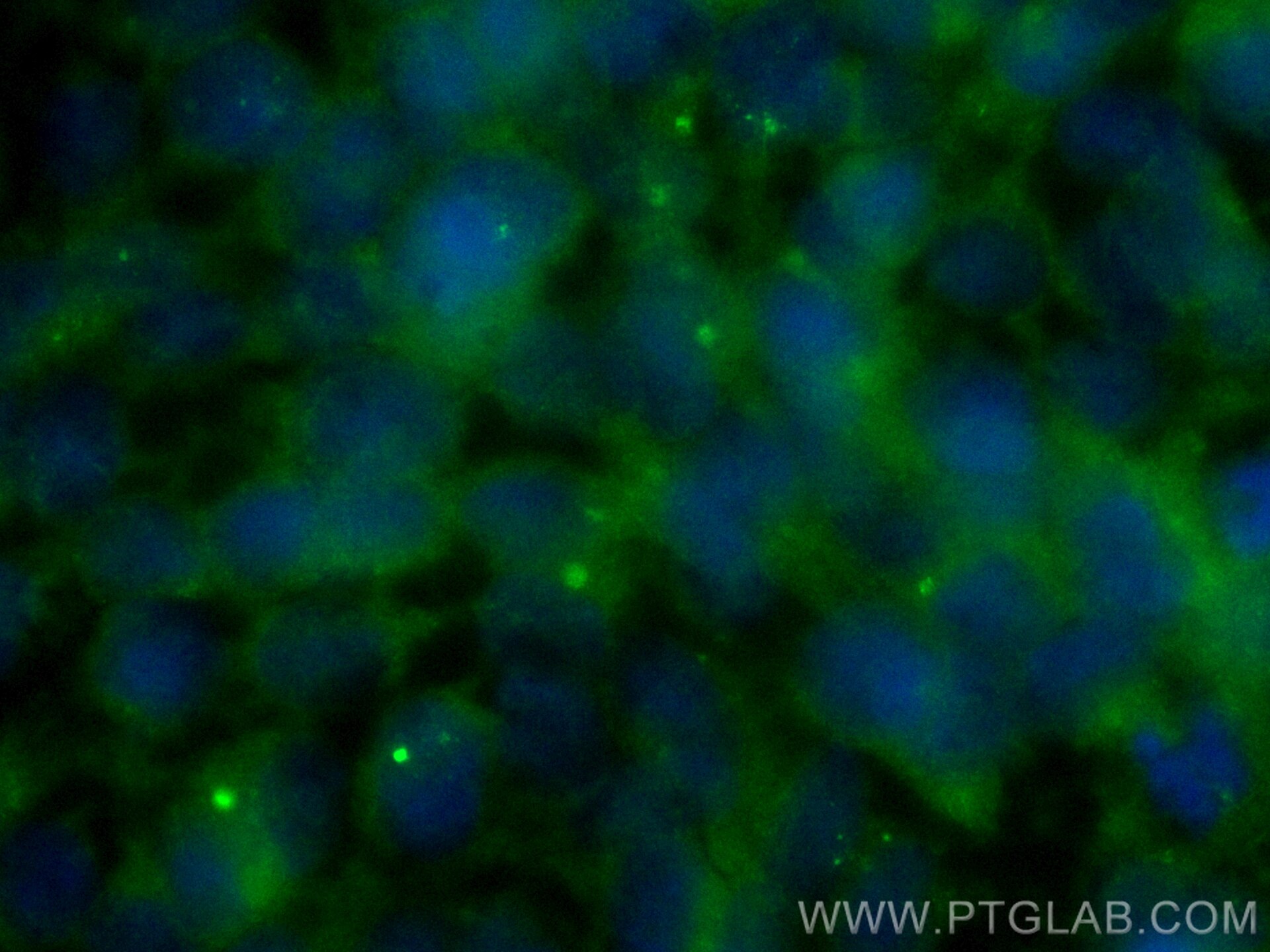Validation Data Gallery
Tested Applications
| Positive IF/ICC detected in | HEK-293 cells |
Recommended dilution
| Application | Dilution |
|---|---|
| Immunofluorescence (IF)/ICC | IF/ICC : 1:50-1:500 |
| It is recommended that this reagent should be titrated in each testing system to obtain optimal results. | |
| Sample-dependent, Check data in validation data gallery. | |
Product Information
CL488-14413 targets PIBF1 in IF/ICC applications and shows reactivity with human samples.
| Tested Reactivity | human |
| Host / Isotype | Rabbit / IgG |
| Class | Polyclonal |
| Type | Antibody |
| Immunogen | PIBF1 fusion protein Ag5755 相同性解析による交差性が予測される生物種 |
| Full Name | progesterone immunomodulatory binding factor 1 |
| Calculated molecular weight | 90 kDa |
| Observed molecular weight | 90 kDa |
| GenBank accession number | BC051911 |
| Gene Symbol | PIBF1 |
| Gene ID (NCBI) | 10464 |
| RRID | AB_3672588 |
| Conjugate | CoraLite® Plus 488 Fluorescent Dye |
| Excitation/Emission maxima wavelengths | 493 nm / 522 nm |
| Form | Liquid |
| Purification Method | Antigen affinity purification |
| UNIPROT ID | Q8WXW3 |
| Storage Buffer | PBS with 50% glycerol, 0.05% Proclin300, 0.5% BSA , pH 7.3 |
| Storage Conditions | Store at -20°C. Avoid exposure to light. Stable for one year after shipment. Aliquoting is unnecessary for -20oC storage. |
Background Information
PIBF1 is induced by the steroid hormone progesterone and plays a role in the maintenance of pregnancy. PIBF1 regulates multiple facets of the immune system to promote normal pregnancy including cytokine synthesis, natural killer (NK) cell activity, and arachidonic acid metabolism. Low serum levels of this protein have been associated with spontaneous pre-term labor in humans. PIBF1 may promote the proliferation, migration and invasion of glioma.
Protocols
| Product Specific Protocols | |
|---|---|
| IF protocol for CL Plus 488 PIBF1 antibody CL488-14413 | Download protocol |
| Standard Protocols | |
|---|---|
| Click here to view our Standard Protocols |
